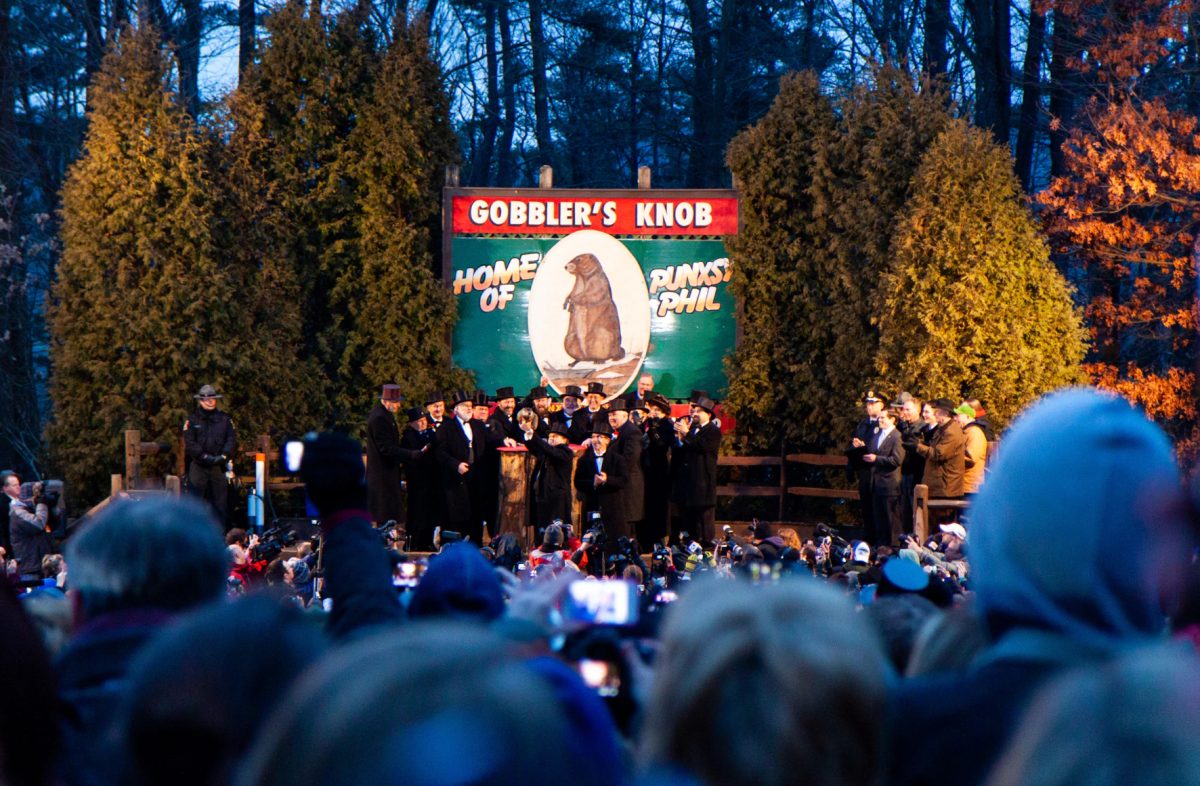Groundhog Day, celebrated every year on Feb. 2, takes its name from early European ancestry, rooted in German-speaking Pennsylvania Dutch. Feb. 2 was traditionally marked by Germans as “Badger Day,” following a commemoration of Jesus called Candlemas.
Following German trends, Pennsylvanians let the rodent predict how many weeks of the winter solstice were left. However, they prolonged the winter for six weeks instead of four. “Groundhog” comes from Pennsylvania Dutch influence, citing the badger as the “dox,” now known as the woodchuck, or a very large rodent.
Punxsutawney Phil, the groundhog’s name, stems from the town where the original shadow was seen. Phil supposedly comes from the inspiration of King Phillip, according to the Punxsutawney Groundhog Club.
1886 was the year of the groundhog, officially marking the first reported news of Groundhog Day observance. The Punxsutawney Spirit, a Pennsylvania-based news publication, pressed whether or not the “beast saw its shadow.” It wasn’t until 1887 that Groundhog Day was officially recognized as an annual celebration. From here, the groundhog was consulted every year at Gobbler’s Knob, home of Punxsutawney Phil.
Groundhog Day predicts how many weeks of the winter solstice are left; if Phil sees his shadow, six more weeks of winter follow. If not, above-average temperatures and an early spring equinox are to follow.
Canada and the United States are the only countries to observe Groundhog Day. Although speculations have been made regarding the accuracy of the advent, Bill Murray’s 1993 comedy film, Groundhog Day, has kept the tradition alive, increasing awareness and attention to Groundhog Day activities.





















Kaylina Madrill • Feb 2, 2024 at 11:51 am
I’ve never actually thought about the history behind Groundhog Day! It’s way more thought out and interesting then I originally thought.
Braeden Corliss • Feb 2, 2024 at 11:51 am
This is a great insight on the history of the Groundhog Day celebration!
Savanah Bayer • Feb 2, 2024 at 11:49 am
So glad we’re having early spring!
Lars • Feb 2, 2024 at 11:48 am
Wow. Groundhog Day has such a deep, rich history dating back centuries, it’s very fascinating.